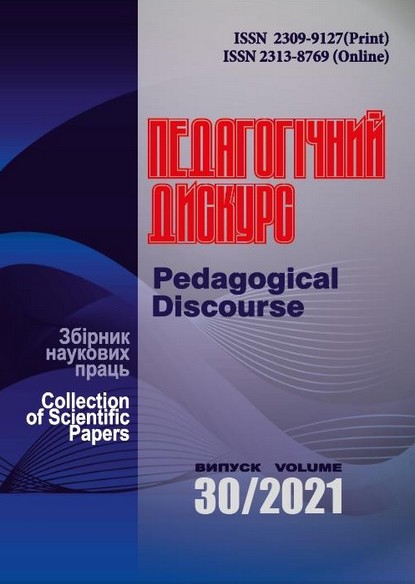Usage of the Educational Video by Students-Veterinarians Who are Studying Operative Surgery
Abstract
The training of veterinary surgeons, in conditions that do not allow for surgical intervention, requires the use of modern interactive teaching aids. These include educational surgical video. Providing auditory and visual perception of information, it has high informative character.
Surgical video gives the opportunity to communicate to each student all the intricacies of the operation, without requiring its presence on it, allows you to demonstrate all stages of the process, being in the most comfortable point of perception. Watching a high-quality video that reproduces the dangerous work of a surgeon without risk completely helps to master the necessary material. Another important advantage of the educational video is that the student can view it on his own, in order to acquaint or repeat the material, as well as to store it on disk media.
In the course of research, an analysis of scientific sources on the use of educational videos in higher education was conducted. In order to obtain data on the use of surgical video, by the students studying operative surgery, were used such sociological methods as surveys, observations, questionnaires.
According to the data obtained in the study of operative surgery, all students use the abstract of classroom lessons and surgical video. 75% of them use the textbook and 25% of the surgical sites. However, among those who take information on surgical sites, 70% are looking for text materials and 30% are browsing photos and pictures. In preparation for a real operation, all students prefer a video showing the entire operation from beginning to end. With the educational purpose of such a movie would be to view ¾ of the students surveyed, and for others it is short enough. 50% of the students after the first review of the video tutorial on the topic in the lecture room at home look for similar materials and revisit them as well as download their media.
The work opens the prospect of further research on the use of surgical video in the preparation of veterinary surgeons.
Downloads
References
Basev, I. N. (2015). Ispol'zovanie video v uchebnom processe [Using Video in the Learning Process]. Perspektivy razvitiya informacionnyh tekhnologij – Prospects for the Development of Information Technology, 24, 130–133. Retrieved from https://cyberleninka.ru/article/n/ispolzovanie-video-v-uchebnom-protsesse [in Russian].
Slastenin, V. A., Isaev, I. F., & Shiyanov, E. N. (2014). Pedagogika [Pedagogy]. Moscow: Akademiya. Retrieved from https://nashol.me/2016010887887/pedagogika-slastenin-v-a-isaev-i-f-shiyanov-e-n-2014.html [in Russian].
Stepanov, O. D. (2017). Vykorystannia internet-tekhnolohii i sotsialnykh merezh studentamy mahistratury, shcho vyvchaiut khirurhichni khvoroby tvaryn [Use of Internet Technologies and Social Networks by Master’s Students Studying Surgical Diseases of Animals]. Profesiino-prykladni dydaktyky – Professional and Applied Didactics, 3, 239–247 [in Ukrainian].
Stepanov, O. D. (2020). Vykorystannia sotsіalnykh merezh studentamy-veterynaramy, shcho vyvchaiut veterynarnu hіrurhiiu [Use of Social Networks by Students-Veterinarians Studying Veterinary Surgery]. Pedahohіchnyi dyskurs – Pedagogical Discourse, 28, 32–38. Retrieved from https://doi.org/10.31475/ped.dys.2020.28.04 [in Ukrainian].
Terpugova, O. A. (2015). Video na uchebny’x zanyatiyax [Video in Training Sessions]. Problemy’ i perspektivy’ fiziko-matematicheskogo i texnicheskogo obrazovaniya – Problems and Prospects of Physical-Mathematical and Technical Education: proceeding’s of the conference (p. 191–195) Ishim. Retrieved from https://www.elibrary.ru/download/elibrary_25633003_94994027.pdf [in Russian].
Brame, C. J. (2015). Effective educational videos: Principles and guidelines for maximizing student learning from video content. Cell Biology Education – Life Sciences Education, 15, 4, 1–6. Retrieved from http://www.lifescied.org/content/15/4/es6.full.pdf+html [in English].
Coyne, E., Frommolt, V., Rands, H., & Kain, V. (2018). Simulation videos presented in a blended learning platform to improve Australian nursing students’ knowledge of family assessment. Nurse Educ Today, 66, 96–102. Retrieved from https://doi.org/doi:10.1016/j.nedt.2018.04.012 [in English].
Dash, S., Kamath, U., & Rao, G. (2016). Audio-visual aid in teaching «fatty liver». Biochem Mol Biol Educ., 44, 241–245. Retrieved from https://doi.org/10.1002/bmb.20935 [in English].
Dilly, M., Tipold, A., Schaper, E., & Ehlers, J. (2014). Etablierung eines Skills Labs in der Tiermedizin in Deutschland. GMS Z Med Ausbild., 31 (2), 20. Retrieved from https://doi.org/10.3205/zma000912 [in English].
Elisabeth, C., Rands, H., Frommolt, V., & Kain, V. (2018). Investigation of blended learning video resources to teach health students clinical skills: An integrative review. Nurse Educ Today, 63, 101–107. Retrieved from https://doi.org/doi:10.1016/j.nedt.2018.01.021 [in English].
Forbes, H., Oprescu, F. I, Downer, T., & Phillips, N. M. (2016). Use of videos to support teaching and learning of clinical skills in nursing education: A review. Nurse Educ Today, 42, 53–56. Retrieved from https://doi.org/10.1016/j.nedt.2016.04.010 [in English].
Jaffar, Akram Abood (2012). «YouTube: An emerging tool in anatomy education». Anatomical Sciences Education, 5 (3), 158–164. Retrieved from https://doi.org/10.1002/bmb.20935 [in English].
June, S., Yaacob, A., & Kheng, Y. K. (2014). Assessing the Use of YouTube Videos and Interactive Activities as a Critical Thinking Stimulator for Tertiary Students: An Action Research. International Education Studies. 7, 8, 56–67. Retrieved from https://doi.org/10.5539/ies.v7n8p56 [in English].
Knösel, M., Jung, K., & Bleckmann, A. (2011). «YouTube, Dentistry, and Dental Education». Journal of Dental Education, 75 (12), 1558–1568. Retrieved from https://pubmed.ncbi.nlm.nih.gov/22184594/ [in English].
Müller, L. R., Tipold, A., Ehlers, J. P., & Schaper, E. (2019). TiHoVideos: veterinary students' utilization of instructional videos on clinical skills. BMC Vet Res., 11, 15(1), 326. Retrieved from https://doi.org/10.1186/s12917-019-2079-2 [in English].
Schmid, R. F., Bernard, R. M., & Borokhovski, E. (2014). The effects of technology use in postsecondary education: A meta-analysis of classroom applications. Computers & Education, 72, 271–291. Retrieved from https://doi.org/10.1016/j.compedu.2013.11.002 [in English].
Stockwell, B. R., Stockwell, M. S., & Cennamo, M. (2015). Blended learning improves science education. Jiang. Cell., 162, 933–936. Retrieved from https://doi.org/10.1016/j.cell.2015.08.009 [in English].
Stone, R., Cooke, M., & Mitchell, M. (2020). Exploring the meaning of undergraduate nursing students’ experiences and confidence in clinical skills using video. Nurse Educ Today, 86, 104322. Retrieved from https://doi.org/10.1016/j.nedt.2019.104322 [in English].
Stone, R., Cooke, M., & Mitchell, M. (2020). Undergraduate nursing students' use of video technology in developing confidence in clinical skills for practice: A systematic integrative literature review. Nurse Educ Today, 84, 104230. Retrieved from https://doi.org/10.1016/j.nedt.2019.104230 [in English].
Thomsen, A., Bridgstock, R., & Willems, C. (2014). Teachers flipping out beyond the online lecture: Maximising the educational potential of video. Journal of Learning Design, 7, 67–78. Retrieved from https://www.jld.edu.au/article/view/209.html [in English].
Copyright (c) 2021 Pedagogical Discourse

This work is licensed under a Creative Commons Attribution-NonCommercial-ShareAlike 4.0 International License.

















